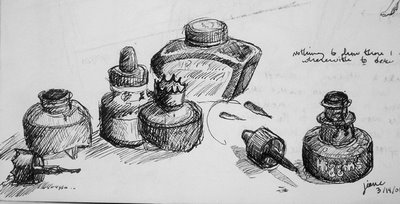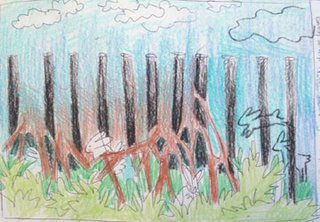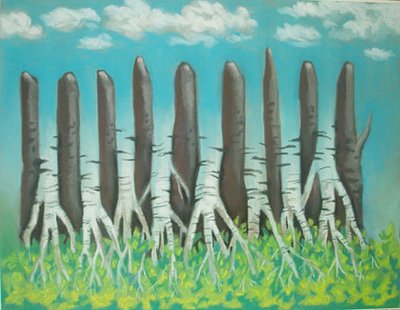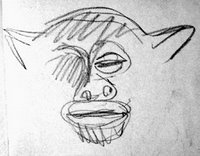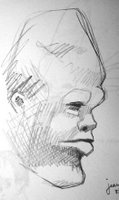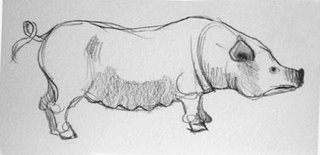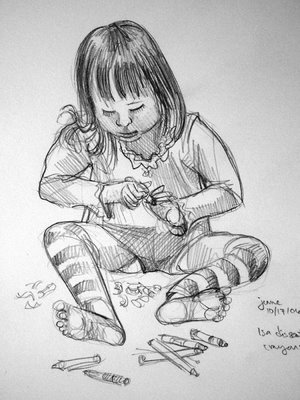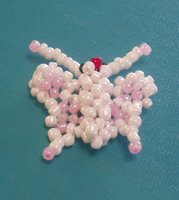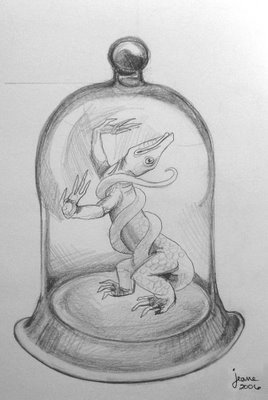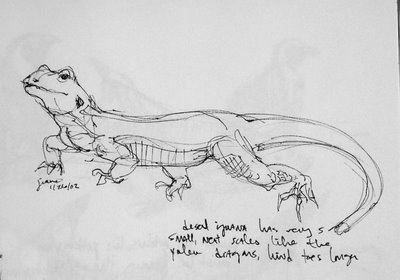 An early oil painting of mine, ode to one of my favored sketching media: pen and ink, the kind where you dip a steel nib into liquid black ink in a jar and drag it across the paper with various thins and thickness following the pressure of your hand....
An early oil painting of mine, ode to one of my favored sketching media: pen and ink, the kind where you dip a steel nib into liquid black ink in a jar and drag it across the paper with various thins and thickness following the pressure of your hand....
Yesterday I visited the Baltimore Museum of Art with my sister and my two year old daughter. It was a very inspiring day. I always feel refreshed, like my eyes have had light poured into them, after seeing rooms and rooms of paintings. I spent much time with my nose just inches from the canvases, enthralled by the work of the Realists and the Barbizon School
. My dauther was not so thrilled. She was content for a while to accompany us through the galleries of gleaming still life collections of fruit, race horses in unnatural flying poses, portraits of faces with breathing skin. Then she got bored of the paint and wanted to just sit on the benches.
I study the paintings so closely not to learn their secrets, but simply because I enjoy the passages of paint. Even though I don't regularly use oil paint myself now, I remember well how it felt to have brushes in my hands during my school days. I look at the surface of the paintings and I can imagine to myself which pigments the artist mixed to get this color, exactly how he laid his brush to make this mark, the turn of the wrist that created the raised edge of that stroke. It is mesmerizing.
The curious thing is that although I delight so much in oil paintings, I find myself working almost exclusively in soft pastels these days. For several months last year I struggled to find a way to work with oils, but couldn't get around my sensitivity to the odors, especially when I have no separate work space with proper ventilation. I also worry about exposing my child to fumes. My best discovery so far was water-soluble oil paints. But the odors of linseed oil still gave me headaches. I daydream sometimes about trying another innovative product I have heard of: heat-set oils. Apparently they stay wet on your palette, brushes, canvas, until exposed to a certain temperature via a heat-gun. It sounds great!
But in the meantime I have become so used to the manners of soft pastels that when I occasionally pick up brushes and paint again it feels like speaking a foreign language I haven't used in a year. I have always loved the freedom and spontaneity of drawing, the immediacy of making the marks. Painting takes more care and concentration for me. Pastels are the best of both: it feels like drawing, yet I can get effects like paint. In fact, that is how this method was taught to me.
 This is one of the first pastel paintings I did. It is a copy of a detail from John Singer Sargent's portrait of Mr. and Mrs. Isaac Newton Phelps Stokes. The nose is crooked and the proportions are slightly off, but the feel of the pastels and richness of color laid down (in this case) on Arches watercolor paper, was amazing to me!
This is one of the first pastel paintings I did. It is a copy of a detail from John Singer Sargent's portrait of Mr. and Mrs. Isaac Newton Phelps Stokes. The nose is crooked and the proportions are slightly off, but the feel of the pastels and richness of color laid down (in this case) on Arches watercolor paper, was amazing to me!
In school, two of my instructors of life-drawing classes taught a method of using soft pastels to mimick the effects of oil paintings. Painters used to make studies of their planned works in pastels before painting it on canvas. All the pastel paintings I had noticed before used it like the impressionists, laying strokes next to each other to create the effect of blending with the eye, and to preserve the pure colors of the pastels. In this method, layers of color are laid lightly on top of each other to create blending, much like underpaintings are done in oils. I loved this way of working with pastels, but even after using it in class a few times I never dreamed then I would become a pastelist!
Now it looks as if I can't get myself away from it.
Thus I have once again abandoned an attempt at oils, leaving my Bell Jar Lizard sitting on the side while I make plans for pastel works again. Maybe I'll start him over when my materials arrive. In the meantime, while I wait for a shipment of papers and pastel grounds, I will share with you over the next few days more drawings as I work out my sketches.
Here's one of my favorite old pen and ink drawings of an assorment of ink bottles.
